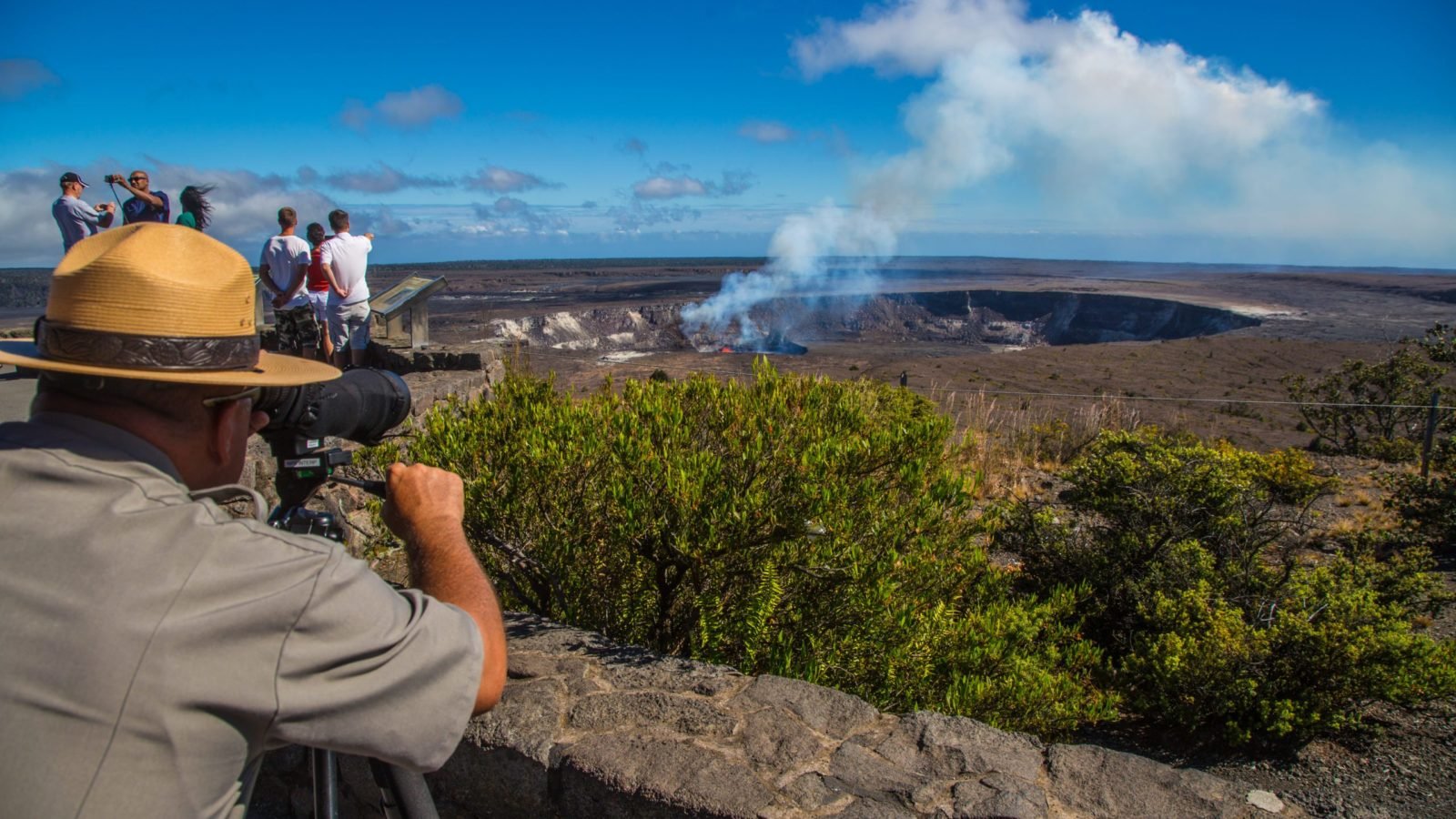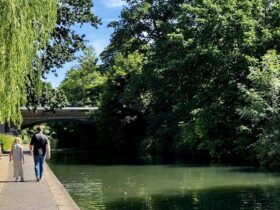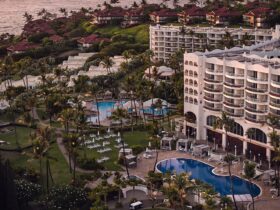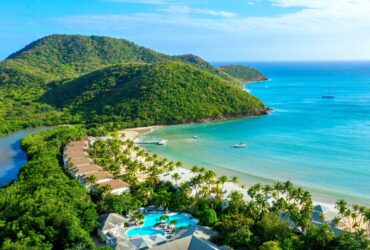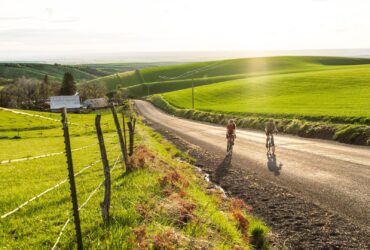A trip to Hawaii Volcanoes National Park is an otherworldly experience of steaming sulfur banks, an easy-to-reach lava tube, and the chance to walk across a still-hardening lava lake. And here’s another something special about this magnificent volcano national park: You might just get lucky and see an active eruption on your visit. I’ve visited this park many times over the last two decades (I have family on the island so I always have an excuse to go!), and each and every time I’m wowed by something new.
The Big Island of Hawaii has been formed by five volcanoes, two of which are considered active and are part of Volcanoes National Park: Kilauea, which makes up much of the park, has been actively erupting since 1983. Mauna Loa, which also lies in the park, had not erupted since 1984 before it erupted in November 2022. Keeping tabs on NPS alerts is key in times of active eruptions.
WHERE TO STAY: 6 Best Hawaii Resorts That Are (Almost) All-Inclusive
A Guide to Hawaii Volcanoes National Park
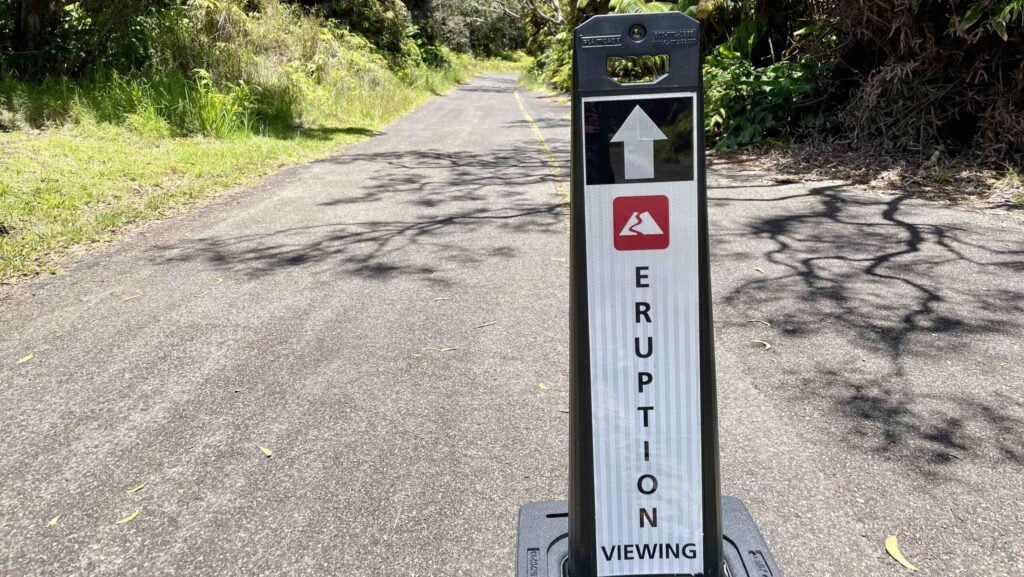
There’s perhaps no better place in the United States to see the power of volcanic activity than here at Hawaiʻi Volcanoes National Park. But it’s a fairly isolated place, prone to extreme weather and conditions, so you definitely want to do some prep work before you go. Here’s my guide for making the most of a trip.
1. Prepare for your Hawaii Volcanoes National Park visit.
Seeing active lava flow isn’t the only aspect of Volcanoes National Park that you can’t predict; the fog, vog (volcanic fog or unclear air), mist, and rain move through without much predictability. The National Weather Service may anticipate 30 percent chance of rain in the morning on a day you spend soaked to the core all day (I’ve experienced this more than once).
NO PASSPORT NEEDED: 12 Best Beach Resorts in the U.S. for Families
If you’re looking for a clear day, your best bet is to call the Visitor Center or Volcano House Hotel to check on the weather at Hawaii Volcanoes National Park. You want to get as realtime as possible when it comes to knowing what it looks like “on the ground” (do not trust an app or widget on this one), and for the best experience, it pays to be flexible. If you only set aside one day of your trip to the Big Island for the national park, there’s a chance you may not get the views you were hoping to see. That said, the park is magnificent and otherworldly no matter the weather and is most certainly worth the trip, especially if you’re prepared with layers, rain gear, flashlights, good walking shoes, snacks, and water.
2) Time your visit and pack accordingly.
There aren’t many places to find food or water in the park, so plan accordingly. While the town of Volcano is nearby (and there’s a fantastic Thai food truck along the highway), and there is one store, you can’t guarantee it being open or having what your family may want or need. Also, even on the shortest hikes in Volcanoes, visitors need a lot of water—remember, it’s mostly fields of hot black rock.
DISNEY DOES HAWAII: Should You Stay at Disney’s Aulani Resort in Hawaii? Here’s How to Decide
And lastly, when lava flow is happening, it’s most impressive to see the park at night, when you’ll have to walk through darkness to get to that glowing red, steamy view (and photo op). If you stay for night viewing, come prepared for cold and dark—a phone’s flashlight will not be enough for night hiking, so definitely have one flashlight on hand for at least every two walkers (but best is one per person).
3) Start at the visitor center and prioritize your top experiences.
Volcanoes’ Main Entrance leads you to your first stop at the Visitor Center to get oriented. Take the time to check out the maps, both flat and in relief, learn about the regularly changing conditions, and ask any questions before you head out. There are park rangers there to answer your questions, though you may have to wait in a line of curious visitors to ask yours. On a clear day or evening, your first vista should be out the back door of Volcano House across the street from the Visitor Center.
HIGHLY RECOMMENDED: I Took a Dog on a Field Trip in Hawaii and it Was the Best
The breathtaking view of Halema’uma’u Crater (within Kiluea Caldera) gives you a sense of the ever-changing nature of this park and its active volcanoes. From the Volcano House viewpoint 4,000 feet above sea level, you can see where the lava lake has risen and fallen and where rock slides have changed the nature of this crater. If it’s a time of visible lava, it’s best to get here either in the dark hours of the morning or in the late evening (check the park’s information page about parking and traffic for night visiting) to see the lava and smoke plume in the contrast of night; the best view, however, may be an access point around the sides of the crater.
Given the change in lava activity, road and trail openings are variable, so always confirm with the National Parks Service. If it’s open, drive around Chain of Craters Road and stop at the sulfur banks for a treat. Sightseeing along this road will give you ample perspectives on the ever-changing Halema’uma’u crater on Kilauea.
Great Hawaii Volcanoes National Park Hikes
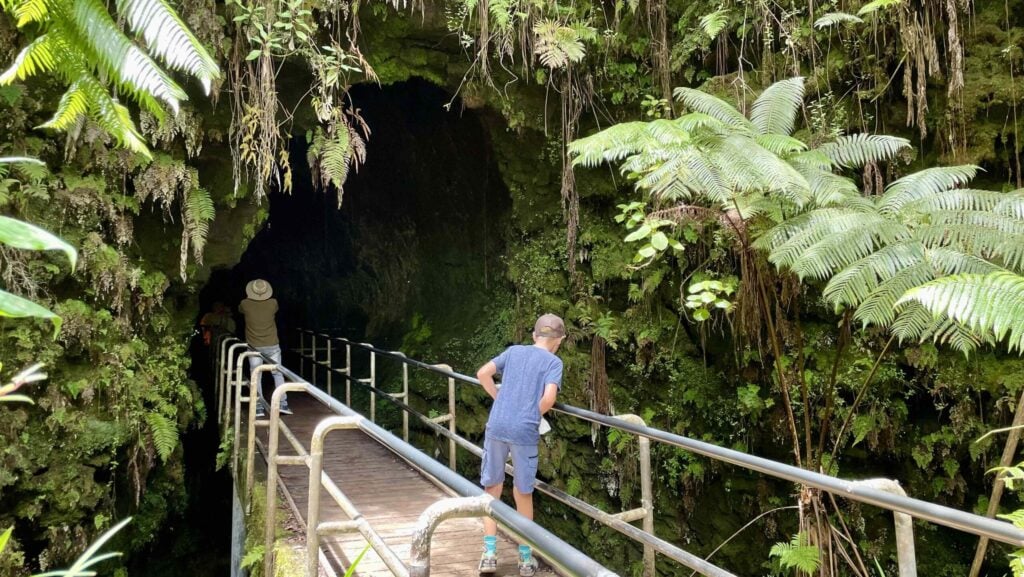
There are several days worth of hikes in and around the park, but the best hikes for families in Hawaii Volcanoes National Park are Thurston Lava Tube, Devastation Trail, and Kilauea Iki. Here’s what you need to know about each of the hiking trails.
My Go-To Hike for Families with Younger Kids: Thurston Lava Tube
Thurston Lava Tube is a great first familiarization walk for any visitor to Hawaii Volcanoes National Park, and at about a half a mile roundtrip, it’s particularly great for families with kids. Parking can be tricky (just keep driving up and down the road near the Lava Tube hiking trail; eventually you’ll time it right and score a spot), but it’s worth it.
NO BLISTERS: 10 Comfortable Shoes That Can Handle a Full Day of Walking
While this is a good trail for families, there are some steep parts, so plan accordingly (if your kids are still small enough to carry, this is a where a hiking backpack might come in handy). The loop trail first takes you down into the lush Hawaiian rain forest on a paved trail with handle rails. Along the way, there are signs to teach you about your surroundings.

Once you’ve descended, you get to the main attraction: A gentle but also exciting walk through a vast lava tube which is mostly illuminated. Tall adults should watch the side walls, and note that puddles persist year round. If you’re looking for more lava tube adventure, check out Kaumana Caves in nearby Hilo; there you’ll see how valuable that illumination really is. On the way out of the tube (you go through it and out the other side) there are some stairs, and then a trail back to the top. If you’re feeling ambitious, the Thurston trail intersects with a number of other trails, so you could turn this into a more ambitous hike.
To See the Power of Nature: Devastation Trail at Hawaii Volcanoes National Park
Slightly less devastating than it was 30 years ago because, well, things grow, Devastation Trail is a great example of what happens when once-lush tropical land is completely covered in lava and ash. The further you stroll along the short, half-mile paved walkway out into the (somewhat) barren landscape, the greater the sense of the vastness of the (natural and healthy) destruction.
CAN’T DECIDE? Here’s How to Choose the Best Hawaiian Island to Visit
Devastation Trail leads to a fantastic overlook of Pu’u Pua’i, site of the 1959 eruption that shot lava 1,900 feet into the air.
Important Note: It’s always illegal to remove rocks from a national park, and Hawaii Volcanoes National Park is no exception. While you can’t remove the rocks, you can pick them up and admire them, and as you’re walking, it’s fun to keep your eyes peeled for emerald-like crystal olivine in the dark black obsidian rock. You’ll be extra lucky if you find one of Pele’s tears—a lava rock in the shape of the teardrops of the Hawai’ian Goddess of Fire.
For an Ambitious Hike with Great Rewards: Kilauea Iki
Because it’s longer than the other two more gentle walks and has several steep switchbacks on the way up, you may need to gather your reserves to do the Kilauea Iki hike. If you’re thinking about doing this hike with children: It’s certainly doable for kids eight and up, and I know five-year-olds who have done it, but it’s still a little beyond “easy” as family hikes go.
EXOTIC ESCAPES: 10 Best All-Inclusive Honeymoon Resorts in the World
A gentle slope around the flank of the lava lake brings you through native forest where you may get to see Hawaiian birds such as the apapan’e or the amaki’hi and flora like the ohi’a lehua tree or amaʻu ferns. Eventually, you descend into the still-hardening lava lake where steam rises out of cracks and new plants fight their way into existence through the cracks of the lava. Once you’ve crossed the crater, it’s back to the forest, where steep switchbacks challenge you as you appreciate more native forest (or at the least focus on the ground in front of you!).
Hawaii Volcanoes National Park Hotels
If you want to stay in the park, your only hotel choice (which is a good one), is to stay at Volcano House, a historical and recently restored hotel just across Crater Rim Drive from the Kīlauea Visitor Center. The hotel sits on the rim of the Kīlauea caldera (and has truly incredible views), and has 33 guest rooms. It also manages 10 refurbished camper cabins and campsites at Nāmakanipaio Campground, just a short distance away. Even if you’re not staying at Volcano House Hotel, you can stop in for a meal in the dining room, a drink in the lounge, or to buy snacks or souvenirs in the snack bar and gift shop.
The volcano Mauna Loa offers another intriguing option to ambitious outdoorsy types: rustic cabins accessible by backcountry hiking. The National Parks Service describes getting to the cabins as an “extremely grueling, rocky and steep 10.2-mile hike,” and you need a backcountry permit, but I’ve heard the views are unbeatable. You need a backcountry permit to access the cabins.
To stay near the park, check out the options in nearby town of Volcano. It’s a less than 10 minute drive from the visitors center (you can also catch a bus into the park), and the little village is home to a cluster of small inns and B&Bs including Volcano Village Lodge, Lotus Garden Cottages, and Volcano Rainforest Retreat.
Things to Do on the Big Island Beyond Hawaii Volcanoes National Park
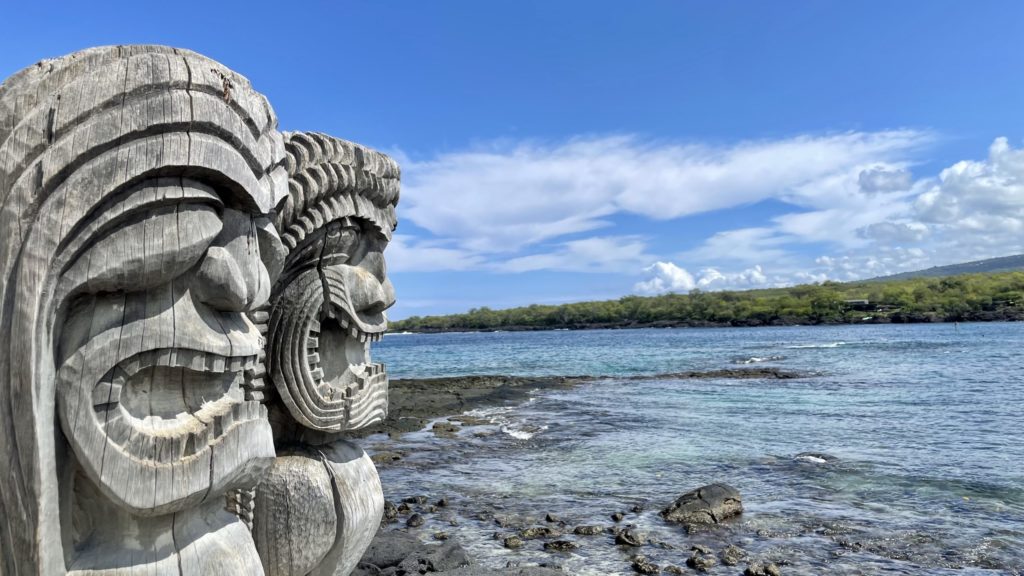
For most Island of Hawai’i visitors, a visit to Hawai’i Volcanoes National Park is a highlight, but certainly not the only thing on the itinerary. Here are some of my favorite things to do on the west (Kona) and east side (Hilo) of the Big Island.
What to Do in and around Hilo
If your main goal is Volcanoes National Park, it’s likely that you’ll come in through Hilo. Hilo’s famous Farmer’s Market happens every day, but from Wednesday through Saturday is when you’ll see the most local artisans and chefs selling their specialties.
Richardson’s Bay in Hilo is a great spot for (brackish) water snorkeling, turtle spotting year-round, and whale sightings in winter. Rainbow Falls and Boiling Pots are two great spots to visit after a rain, when they’re at their most dramatic. And the Hawaii Tropical Bioreserve and Garden is a stunning spot to spend a few hours. Just note it’s a bit steep to get down into the bioreserve (you park along the road, buy a ticket, and then head down into a valley next to the water).
If you’re in Hilo when it’s showing off its claim to fame as the “rainiest city in America” and need some indoor activities, head to the Pacific Tsunami Museum, Mokupapapa (or NOAA’s Marine National Monument museum of the Hawaiian Island chain), or ‘Imiloa—Hilo’s awesome astronomy center.
Kona Side Things to Do
On the “sunny” (Kona) side of the Big Island, you can get a deep understanding of Hawaiian history at the National Monument that is Puʻuhonua o Honaunau, or City of Refuge, and then can hop across the way to go snorkeling at the pristine Honaunau Bay.
Many of Hawaii’s famous beaches line this coast, most notable being Hapuna Beach and the beach at the Mauna Kea Beach Hotel. Note that all Hawaiian beaches are public right of way, but the Mauna Kea Beach Hotel beach keeps most people out by limiting parking spaces. My advice is to gather your beach essentials and either get there very early in the morning or wait until late afternoon to get a public access parking space. (It’s worth noting that the Mauna Kea Beach Hotel ranks as one of the best family hotels in Hawaii across all of the islands.)
SHADY DAYS: 10 Breezy Beach Tents That Are Easy to Set Up and Take Down
A visit to the Big Island wouldn’t be complete without a trip the visitor information station at the Onizuka Center for International Astronomy, situated at the 9,200-foot elevation point on Mauna Kea. Most important, check the weather and road conditions before you go and make sure it will be a clear night.
Drive up in late afternoon to watch the sunset over the peaks of the island, then enjoy one of the most dramatic starry nights on earth, but come prepared for cold and elevation. Stop along the way to let your body acclimate to the dramatic elevation change, drink plenty of water, and bring a flashlight/head lamp and layers. Since visitor information station is no longer is hosting stargazing tours, it’s best to book with a tour group to get the full experience.
More from FamilyVacationist:
- 7 Iconic U.S. Attractions Kids Should See Before They Grow Up
- 11 Budget-Friendly Family Vacations That Are Super Fun
- 10 Best All-Inclusive Beach Resorts in the World



